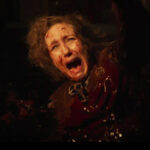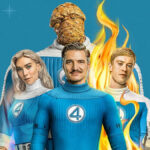Werner Herzog is a visionary German filmmaker known for his unique style, uncompromising vision, and exploration of ambitious and often eccentric protagonists. Over his prolific six-decade career, Herzog has created an impressive body of work spanning feature films, documentaries, and shorts. His films often blur the lines between fiction and reality, delving into the depths of human nature and showcasing individuals in extreme circumstances or with impossible dreams.
From his early collaborations with the volatile Klaus Kinski to his more recent documentaries, Herzog’s films are marked by stunning visuals, philosophical musings, and a fascination with the chaos and beauty of the natural world. In this comprehensive guide, we’ll explore the 25 best Werner Herzog movies that define his remarkable career.
1. Aguirre, the Wrath of God (1972)
Aguirre, the Wrath of God is a mesmerizing historical epic that follows Spanish conquistador Don Lope de Aguirre (Klaus Kinski) as he leads a doomed expedition through the Amazon rainforest in search of the legendary city of gold, El Dorado. As the journey progresses, Aguirre descends into madness, consumed by his own delusions of grandeur. The film is a powerful meditation on the consequences of unchecked ambition and the folly of colonialism.
Herzog’s masterful direction and Kinski’s intense performance create an atmosphere of mounting dread and desperation. The stunning cinematography captures the lush, oppressive jungle and the treacherous river that the expedition must navigate. Aguirre, the Wrath of God is a haunting and unforgettable cinematic experience that solidified Herzog’s reputation as a master filmmaker.
2. Fitzcarraldo (1982)
In Fitzcarraldo, Herzog tells the story of Brian Sweeney Fitzgerald (Klaus Kinski), an Irish rubber baron in Peru who dreams of building an opera house in the Amazon rainforest. To achieve this goal, Fitzcarraldo embarks on an audacious plan to transport a massive steamship over a mountain with the help of indigenous tribesmen.
The film’s production was notoriously difficult, with Herzog insisting on hauling a real 320-ton steamship over a hill without the use of special effects. This commitment to authenticity mirrors Fitzcarraldo’s own obsessive pursuit of his dream. Kinski delivers another intense performance as the driven protagonist, while the lush cinematography and Popol Vuh’s haunting score create an otherworldly atmosphere. Fitzcarraldo is a grand, operatic tale of human determination in the face of seemingly insurmountable obstacles.
3. Grizzly Man (2005)
Grizzly Man is a fascinating documentary that explores the life and death of Timothy Treadwell, a self-styled environmentalist who spent 13 summers living among grizzly bears in Alaska before being killed by one in 2003. Using Treadwell’s own footage and interviews with those who knew him, Herzog creates a complex portrait of a man driven by his love for bears but ultimately consumed by his own naivety and hubris.
Herzog’s narration provides philosophical insight into Treadwell’s story, questioning the nature of his relationship with the bears and the inherent dangers of anthropomorphizing wild animals. The film is both a cautionary tale and a meditation on the human need to find meaning and purpose in the natural world. Grizzly Man showcases Herzog’s skill at crafting compelling narratives from real-life events and his ability to find the universal in the specific.
4. The Enigma of Kaspar Hauser (1974)
The Enigma of Kaspar Hauser tells the strange but true story of a young man who appeared in Nuremberg, Germany, in 1828, claiming to have been held captive in a dark cell for most of his life. The film follows Kaspar (Bruno S.) as he struggles to adapt to society and learn the ways of the world, while those around him try to unravel the mystery of his past.
Herzog’s sensitive direction and Bruno S.’s affecting performance create a poignant and thought-provoking exploration of innocence, socialization, and the human condition. The film raises questions about the nature of identity and the ways in which society shapes and constrains the individual. The Enigma of Kaspar Hauser is a haunting and deeply humane work that showcases Herzog’s ability to find beauty and meaning in the most unusual of stories.
5. Nosferatu the Vampyre (1979)
In Nosferatu the Vampyre, Herzog pays homage to F.W. Murnau’s classic silent film Nosferatu (1922) while putting his own unique spin on the vampire legend. Klaus Kinski stars as Count Dracula, who becomes obsessed with the beautiful Lucy Harker (Isabelle Adjani) and brings a plague of rats and death to the city of Wismar.
Herzog’s film is a lush and atmospheric retelling of the Dracula story, with Kinski’s portrayal of the vampire as a tragic and lonely figure adding depth to the iconic character. The stunning visuals, including the eerie Transylvanian landscapes and the plague-ridden streets of Wismar, create a sense of gothic dread. Nosferatu the Vampyre is a haunting and poetic take on the vampire mythos that showcases Herzog’s ability to breathe new life into classic tales.
6. Lessons of Darkness (1992)
Lessons of Darkness is a haunting documentary that explores the aftermath of the Gulf War in Kuwait. Herzog’s camera captures the devastation wrought by the conflict, from the burning oil fields to the abandoned military equipment littering the desert. The film is a meditation on the destructive power of war and the resilience of the human spirit in the face of unimaginable tragedy.
Herzog’s poetic narration and the otherworldly visuals of the ravaged Kuwaiti landscape create a sense of apocalyptic beauty. The film is a powerful indictment of the horrors of war and a testament to Herzog’s ability to find meaning and humanity in the most desolate of places.
7. Stroszek (1977)
Stroszek follows the story of Bruno Stroszek (Bruno S.), a Berlin street performer who, after being released from prison, decides to start a new life in America with his prostitute girlfriend and eccentric elderly neighbor. Once they arrive in Wisconsin, however, their dreams of a better life quickly fade as they face poverty, isolation, and exploitation.
Herzog’s film is a poignant and darkly humorous exploration of the American Dream and the harsh realities of life on the margins of society. Bruno S.’s raw and authentic performance anchors the film, while the bleak yet beautiful cinematography captures the stark contrast between the characters’ hopes and their actual circumstances. Stroszek is a powerful and deeply empathetic work that showcases Herzog’s ability to find the extraordinary in the lives of ordinary people.
8. Cave of Forgotten Dreams (2010)
In Cave of Forgotten Dreams, Herzog gains exclusive access to the Chauvet Cave in southern France, which contains the oldest known cave paintings in the world. Using 3D technology, Herzog captures the stunning beauty and mystery of the cave art, which dates back over 30,000 years.
The film is a meditation on the origins of art and the creative impulse that has driven human beings since the dawn of time. Herzog’s narration is filled with his trademark philosophical musings and wry humor, as he ponders the significance of the cave paintings and the people who created them. Cave of Forgotten Dreams is a visually stunning and thought-provoking documentary that showcases Herzog’s ability to find wonder and meaning in the most ancient of human artifacts.
9. Bad Lieutenant: Port of Call New Orleans (2009)
In Bad Lieutenant: Port of Call New Orleans, Nicolas Cage stars as Terence McDonagh, a drug-addicted detective investigating the murder of a Senegalese immigrant in post-Katrina New Orleans. As McDonagh descends deeper into his own personal hell of addiction and corruption, he becomes increasingly unhinged and desperate to solve the case.
Herzog’s film is a gritty and darkly comedic take on the cop drama, with Cage delivering a manic and mesmerizing performance as the titular bad lieutenant. The film’s hallucinatory visuals and surreal moments reflect McDonagh’s fractured psyche, while the backdrop of a devastated New Orleans adds to the sense of despair and moral decay. Bad Lieutenant: Port of Call New Orleans is a wild and audacious work that showcases Herzog’s ability to subvert genre conventions and create something wholly unique.
10. Little Dieter Needs to Fly (1997)
Little Dieter Needs to Fly is a documentary that tells the story of Dieter Dengler, a German-American pilot who was shot down over Laos during the Vietnam War and held captive in a brutal POW camp. The film follows Dengler as he returns to the jungle where he was imprisoned and retraces the steps of his harrowing escape.
Herzog’s film is a powerful testament to the indomitable human spirit and the will to survive in the face of unimaginable adversity. Dengler’s story is one of courage, resilience, and the unbreakable bond of friendship forged in the crucible of war. Little Dieter Needs to Fly is a deeply moving and inspiring documentary that showcases Herzog’s ability to capture the extraordinary stories of ordinary people.
11. Heart of Glass (1976)
Heart of Glass is a haunting and enigmatic film set in 18th-century Bavaria, where a small village is thrown into turmoil when the master glassblower dies, taking the secret of the ruby glass with him. As the villagers descend into madness and despair, a prophecy emerges of a savior who will restore the ruby glass and bring prosperity back to the community.
Herzog’s film is a mesmerizing exploration of faith, superstition, and the power of myth. The dreamlike visuals, achieved by hypnotizing the entire cast (with the exception of the lead actor), create a sense of otherworldly detachment that mirrors the characters’ own descent into madness. Heart of Glass is a challenging and deeply poetic work that showcases Herzog’s ability to create films that are as much about mood and atmosphere as they are about narrative.
12. My Best Fiend (1999)
My Best Fiend is a documentary that explores the tumultuous relationship between Herzog and his frequent collaborator, the mercurial actor Klaus Kinski. Using footage from their films together and interviews with those who knew them, Herzog creates a fascinating portrait of two driven artists whose collaboration produced some of the most iconic films of the New German Cinema.
The film is a candid and often hilarious look at the creative process and the price of artistic genius. Herzog’s anecdotes about Kinski’s explosive temper and erratic behavior are both terrifying and darkly comedic, while the scenes from their films together showcase the undeniable power of their collaboration. My Best Fiend is a must-see for any fan of Herzog or Kinski, and a testament to the complex and often fraught nature of artistic partnerships.
13. Woyzeck (1979)
Based on the unfinished play by Georg Büchner, Woyzeck stars Klaus Kinski as Franz Woyzeck, a lowly soldier driven to madness and murder by the cruelty and oppression of his superiors. Herzog’s film is a bleak and intense exploration of the human psyche and the ways in which society can crush the individual spirit.
Kinski delivers a raw and powerful performance as Woyzeck, a man pushed to the brink of sanity by the indignities and injustices he suffers. The film’s stark visuals and claustrophobic atmosphere create a sense of mounting dread, as Woyzeck’s world closes in around him. Woyzeck is a haunting and deeply disturbing work that showcases Herzog’s ability to explore the darkest corners of the human experience.
14. Encounters at the End of the World (2007)
In Encounters at the End of the World, Herzog travels to Antarctica to explore the lives of the scientists, researchers, and dreamers who have made this harsh and unforgiving continent their home. The film is a meditation on the beauty and mystery of the natural world, and the ways in which human beings seek to understand and conquer it.
Herzog’s interviews with the eccentric and driven individuals who have chosen to live and work in Antarctica are both humorous and deeply insightful, while the stunning visuals of the frozen landscape create a sense of awe and wonder. Encounters at the End of the World is a poetic and philosophical documentary that showcases Herzog’s ability to find the extraordinary in the most remote and inhospitable places on earth.
15. Cobra Verde (1987)
Cobra Verde, Herzog’s final collaboration with Klaus Kinski, tells the story of a Brazilian bandit who is sent to West Africa to reopen the slave trade. As Cobra Verde becomes embroiled in the politics and power struggles of the local kingdoms, he finds himself caught between his own ambition and the brutality of the slave trade.
Kinski delivers a typically intense and unhinged performance as Cobra Verde, a man driven by his own desires and demons. The film’s lush visuals and haunting score create a sense of dreamlike detachment, even as the horrors of the slave trade are unflinchingly depicted. Cobra Verde is a challenging and deeply unsettling work that showcases Herzog’s ability to explore the darkest aspects of human nature.
16. Fata Morgana (1971)
Fata Morgana is a surreal and experimental documentary that explores the mirages and hallucinations of the Sahara Desert. Herzog’s camera captures the otherworldly beauty of the desert landscape, while his narration muses on the nature of reality and the human experience.
The film is a meditation on the ways in which the mind can play tricks on us, and the thin line between reality and illusion. The haunting visuals and enigmatic structure create a sense of disorientation and unease, as the viewer is drawn into Herzog’s dreamlike world. Fata Morgana is a challenging and deeply poetic work that showcases Herzog’s ability to push the boundaries of the documentary form.
17. Even Dwarfs Started Small (1970)
Even Dwarfs Started Small is a bizarre and unsettling film that follows a group of dwarfs who stage a rebellion at a remote institution. As the dwarfs descend into anarchy and violence, the film becomes a surreal and nightmarish exploration of power, cruelty, and the human condition.
Herzog’s film is a challenging and deeply disturbing work that pushes the boundaries of taste and convention. The performances by the cast of dwarfs are raw and unflinching, while the stark visuals and discordant soundtrack create a sense of unease and disorientation. Even Dwarfs Started Small is a film that defies easy categorization, but remains a testament to Herzog’s uncompromising vision and willingness to explore the darkest aspects of human nature.
18. The Wild Blue Yonder (2005)
The Wild Blue Yonder is a science fiction film that blends documentary footage with a fictional narrative about an alien race that comes to Earth in search of a new home. Herzog’s film is a meditation on the nature of exploration and the human desire to reach beyond the confines of our world.
The film’s stunning visuals, which include footage of the Antarctic landscape and the depths of the ocean, create a sense of wonder and awe, while the fictional narrative adds a layer of philosophical depth to the proceedings. The Wild Blue Yonder is a unique and deeply poetic work that showcases Herzog’s ability to blend fact and fiction in pursuit of a deeper truth.
19. Invincible (2001)
Invincible tells the story of Zishe Breitbart, a Jewish strongman in 1930s Berlin who becomes a sensation in the city’s nightclubs and theaters. As the Nazis rise to power, Zishe must confront the growing tide of anti-Semitism and decide whether to use his strength to fight back or to flee the country.
Herzog’s film is a powerful and deeply moving exploration of the human spirit in the face of unimaginable adversity. The performances are raw and authentic, while the period detail and haunting visuals create a sense of mounting dread. Invincible is a testament to Herzog’s ability to find hope and resilience in the darkest of times.
20. The White Diamond (2004)
The White Diamond is a documentary that follows the efforts of aeronautical engineer Graham Dorrington to test a new kind of airship in the remote jungles of Guyana. The film is a meditation on the nature of obsession and the human desire to conquer the impossible.
Herzog’s camera lingers on the desolate landscapes and the faces of the scientists, capturing both the beauty and the strangeness of this remote corner of the world. The White Diamond is a mesmerizing exploration of the human drive to explore and understand the mysteries of the natural world.
21. Wheel of Time (2003)
Wheel of Time is a documentary that explores the largest Buddhist ritual in Bodh Gaya, India, where pilgrims gather to meditate and pray. Herzog’s camera captures the beauty and chaos of the ritual, from the intricate sand mandala created by the monks to the throngs of devotees prostrating themselves in prayer.
The film is a meditation on the nature of faith and the human search for meaning in a chaotic world. Herzog’s narration is characteristically philosophical and wry, as he ponders the significance of the ritual and the role of religion in human life. Wheel of Time is a visually stunning and thought-provoking documentary that showcases Herzog’s ability to find the universal in the specific.
22. Ballad of the Little Soldier (1984)
Ballad of the Little Soldier is a short documentary that explores the lives of child soldiers in Nicaragua during the Contra War. Herzog interviews the young soldiers, some as young as 10 years old, who have been forced to fight in a brutal conflict they barely understand.
The film is a powerful indictment of the horrors of war and the ways in which children are exploited and traumatized by adult conflicts. Herzog’s interviews with the child soldiers are heartbreaking and revealing, as they speak of their experiences with a mix of bravado and vulnerability. Ballad of the Little Soldier is a haunting and deeply moving work that showcases Herzog’s ability to give voice to the voiceless.
23. Bells from the Deep (1993)
Bells from the Deep is a documentary that explores the religious rituals and beliefs of the Russian Orthodox Church in Siberia. Herzog’s camera captures the otherworldly beauty of the frozen landscape and the fervor of the believers who gather to worship and pray.
The film is a meditation on the nature of faith and the ways in which religion shapes and sustains human communities in even the harshest of environments. Herzog’s narration is characteristically philosophical and poetic, as he ponders the mysteries of the human soul and the search for meaning in a seemingly meaningless world. Bells from the Deep is a haunting and deeply moving work that showcases Herzog’s ability to find the transcendent in the everyday.
24. Gesualdo: Death for Five Voices (1995)
Gesualdo: Death for Five Voices is a documentary that explores the life and music of Carlo Gesualdo, a 16th-century Italian composer known for his innovative and dissonant style. Herzog uses Gesualdo’s music and the story of his troubled life, including the murder of his wife and her lover, as a lens through which to explore the nature of artistic genius and the price of creativity.
The film is a haunting and deeply personal work that showcases Herzog’s own fascination with the extremes of human experience. The music of Gesualdo, performed by the Hilliard Ensemble, is a constant presence throughout the film, creating a sense of otherworldly beauty and unease. Gesualdo: Death for Five Voices is a challenging and deeply rewarding work that showcases Herzog’s ability to find the universal in the specific.
25. Echoes from a Somber Empire (1990)
Echoes from a Somber Empire is a documentary that explores the legacy of Jean-Bédel Bokassa, the brutal dictator of the Central African Republic who crowned himself emperor in a lavish ceremony in 1977. Herzog interviews Bokassa’s former associates and victims, as well as the journalists and diplomats who witnessed his rise and fall.
The film is a haunting and deeply disturbing portrait of a man consumed by his own delusions of grandeur and the ways in which power corrupts and destroys. Herzog’s interviews with Bokassa’s victims are particularly powerful, as they speak of the horrors they endured under his regime with a mix of anger and resignation. Echoes from a Somber Empire is a challenging and deeply unsettling work that showcases Herzog’s ability to confront the darkest aspects of human nature.
Conclusion
As this guide to the 25 best Werner Herzog movies has shown, Herzog’s work is as varied and complex as the man himself. From the grand, operatic visions of Fitzcarraldo and Aguirre, the Wrath of God to the intimate, deeply personal documentaries like Grizzly Man and Little Dieter Needs to Fly, Herzog’s films are a testament to the power of cinema to illuminate the human experience in all its beauty and terror.
Whether you are a longtime fan of Herzog’s work or a newcomer to his unique vision, these 25 films are essential viewing for anyone who loves cinema and wants to explore the outer reaches of the human experience. From the lush jungles of Peru to the frozen wastes of Antarctica, Herzog’s camera has captured the beauty and the horror of the world we live in, and the ways in which human beings struggle to find meaning and purpose in a chaotic and often cruel universe.
So sit back, relax, and prepare to be transported to the strange and wonderful world of Werner Herzog. Whether you are laughing at the absurdity of life or weeping at its cruelty, Herzog’s films are sure to leave a lasting impression on your mind and your heart. For in the end, as Herzog himself has said, “The poet must not avert his eyes.”





